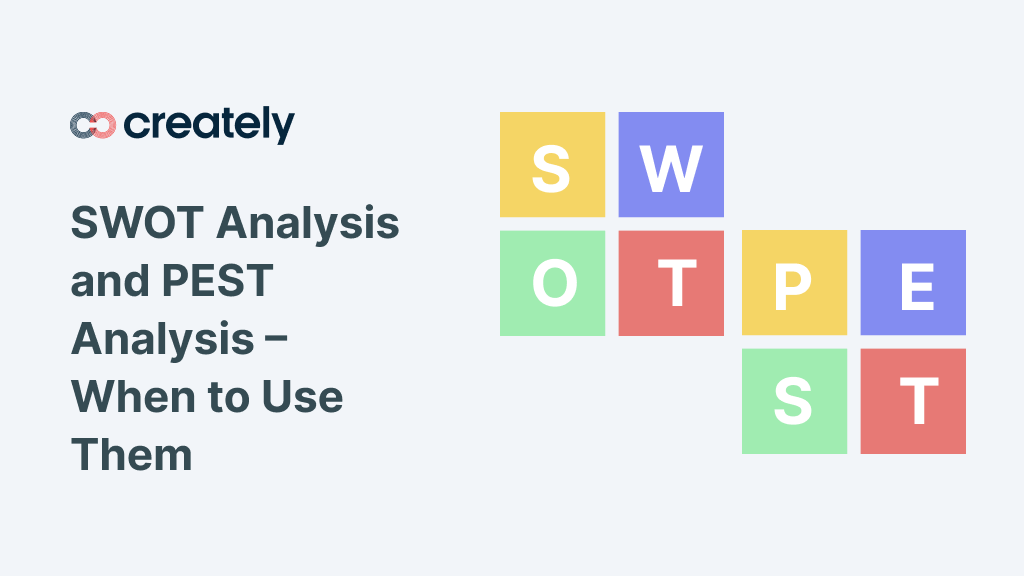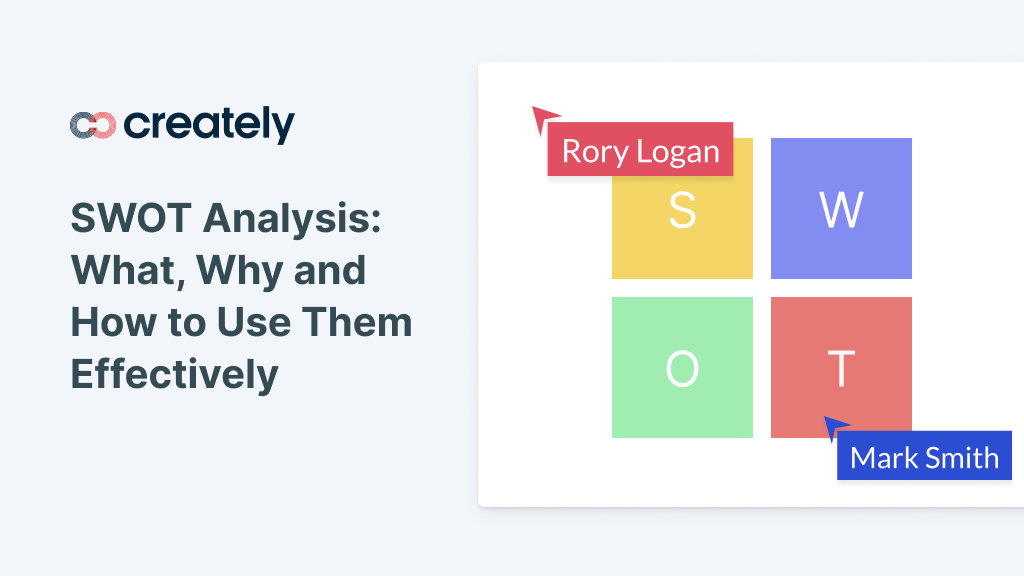We all have strengths. A personal SWOT analysis helps you identify your strengths and make the most of them by aligning them with available opportunities. We all have weaknesses too. Identifying and managing those weaknesses allows you to avoid the potential threats that arise from those weaknesses. A personal SWOT makes the processes simple, visual and actionable and we will show you how to create your own one.
How to do a personal SWOT analysis?
List down the “strengths”
The first step is to list down your strengths. Knowing these will help you to be more confident in an interview or when looking for a job promotion. Because you have listed down things beforehand you’ll have an easier time recalling things as well. Here are few questions to ask yourself when filling this part.
- What are the professional qualifications/certifications you have that make you stand out from the rest?
- Can your expertise in some areas make a difference to the organization?
- What projects/campaigns have you completed successfully?
- Do you have powerful industry contacts? Especially useful in areas like advertising, marketing, and insurance.
- What other skills make you stand out from the rest? For examples things like leadership and dedication to work.
- What do others think as your strengths?
Important: The “stand out from the rest” part is very important in SWOT. For example in a software company having a degree in software engineering is not a strength, because everyone else has one. Masters in mathematics might be a different story.
Know your “weaknesses”
The second step is to identify your weaknesses. As I mentioned before SWOT is used by individuals to assess and improved themselves. Identifying weaknesses is the best way to improve them.
This also helps you to be prepared to answer or counter them if they come up during an interview or performance review. Ask yourself these questions when filling this.
- Do you have the necessary skills/qualifications to be successful in your current or future roles?
- Do you have bad habits? For example, frequently getting late, poor communication skills, bad time reporting, etc.
- What other traits can you improve to be more efficient?
- What do others think as your weaknesses? Even if you don’t consider it a weakness.
Important: Be honest and realistic when answering the questions. After all, it’s a self-assessment which only you will see. Use it as a stepping stone for future improvements.
Find matching “opportunities”
We often miss opportunity because it’s dressed in overalls and looks like work – Thomas A. Edison
Opportunities come in different shapes and forms. Sometimes opportunities pass by you without you even noticing them. So here are a few things to be on the lookout for.
- Are there any significant changes/advancements in your industry that you can take advantage of?
- Has new technology or industry trend emerged that you can make use of future?
- Is a new position advertised in your company that matches your skillset? Or did a position become vacant?
- Is there a new project in your organization that you can join which will benefit your career
- Can acquiring new skills give you a competitive advantage? For example in the airline industry knowing another language to your mother tongue is an advantage.
The list of questions can go on and on. The most important thing is to be on the lookout for opportunities.
Important: It’s great if an opportunity matches your strengths. But sometimes great opportunities arise in areas that don’t match your skillset. Do consider the pros and cons before disregarding them.
Be aware of “threats”
When doing a personal SWOT analysis you need to think of yourself as a company or a product and assess yourself against others. This way it makes it easy for you to identify threats. So here’s how to identify threats.
- Is one of your peers doing a better job than you in a similar role? Are both of you fighting for the same promotion?
- Is the popularity of new technologies or the demise of old technologies threatening your career? For example, it is common for software engineers careers to become stale because they didn’t spend the time to learn the latest technologies.
- Are your personal traits hurting your career advancements?
- What are the obstacles that prevent you from achieving your targets? Could be at work or in your personal lives.
Identify the threats and try to eliminate the ones you can.
Here is a quick video showing how you can perform a SWOT analysis with Creately.
What is a SWOT analysis?
If you’re familiar with SWOT you can skip this section, but if you’re unfamiliar with it SWOT stands for
- Strengths
- Weaknesses
- Opportunities
- Threats
You can use it to assess yourself, compare yourself to your peers/competitors and also use it to find career growth opportunities. Check out SWOT Analysis: What, Why and How for a detailed overview.
Blank Personal SWOT Analysis Template
Now you know how to do it, it’s time to create your own personal SWOT analysis diagram. If you prefer to create it online ( so you can access it anytime, anywhere ) just click on the following blank SWOT template. It will open in a new window inside our diagram editor.
If you prefer to print it out and then do the analysis you can download it as a ready-to-print PDF as well.
Editable Templates ( PDF ) of Personal SWOT
Or you can make use of our professionally designed SWOT analysis templates.
When to do a personal SWOT analysis?
It is a self-assessment, so anytime is a good time. But there are a few specific instances where it can really benefit you.
- When going to an interview – So you can focus on your strengths and talk about them more. It will help in preparing the CV as well. If you have a very good idea about the job requirements beforehand you can modify the CV to match them as well. Remember that recruiters spend on average 6 seconds to decide whether you fit in or not.
- When applying for a promotion – helps you to assess yourself against other candidates. You’ll have a good understanding of your strengths against your competitors so you can focus on them rather than your general strengths.
- Before a career switch – helps you to figure out whether your skills match the opportunities in your new career or whether they are much suited for your current job.
Using a personal SWOT analysis for a career switch
I’ll take myself as an example. Before I moved to marketing I worked as a software engineer for 7 years. I didn’t hate the job, but I wasn’t in love with it either. And I was doing more and more online marketing stuff during my free time. After a while, I assessed my skills, realized I had enough skills to succeed in marketing, and moved to a full-time marketing role. Here’s what the SWOT would look like during that time.
In my case, the differences were somewhat obvious because I was switching to a completely different field. But in some cases, the pros and cons are not that obvious.
For example, if you’re a senior software engineer in a software company you might have to make a decision about taking the management path or the technical path. Do you want that coveted tech lead positions that everyone is competing for or do you want a managerial position with all its responsibilities? Listing things down and doing a detailed SWOT analysis will help you make a better decision.
I hope I’ve addressed all your concerns regarding a personal SWOT analysis. If you have any questions or suggestions don’t hesitate to mention them in the comments. Your feedback is what keeps us going :-). And keep us in mind whenever you need a SWOT analysis tool.
More Example Templates
- Grab Taxi SWOT Analysis
- Anytime Fitness SWOT Analysis
- SWOT Analysis of ESPN
- Etsy SWOT Analysis
- SWOT Analysis – No Child Left Behind
- New SWOT Analysis of a Session Musician









Looks a must have for young Managers and Professionals in updating their skills for promotion and career change .
This is an important tool for self appraisal…..It will take you to a greater height without one noticing!!
Before , we only used to think about our skills and what we love.
Something that pays is also important.You have explained this very nicely.
ieven i havent swot today im im learning how to swot is?